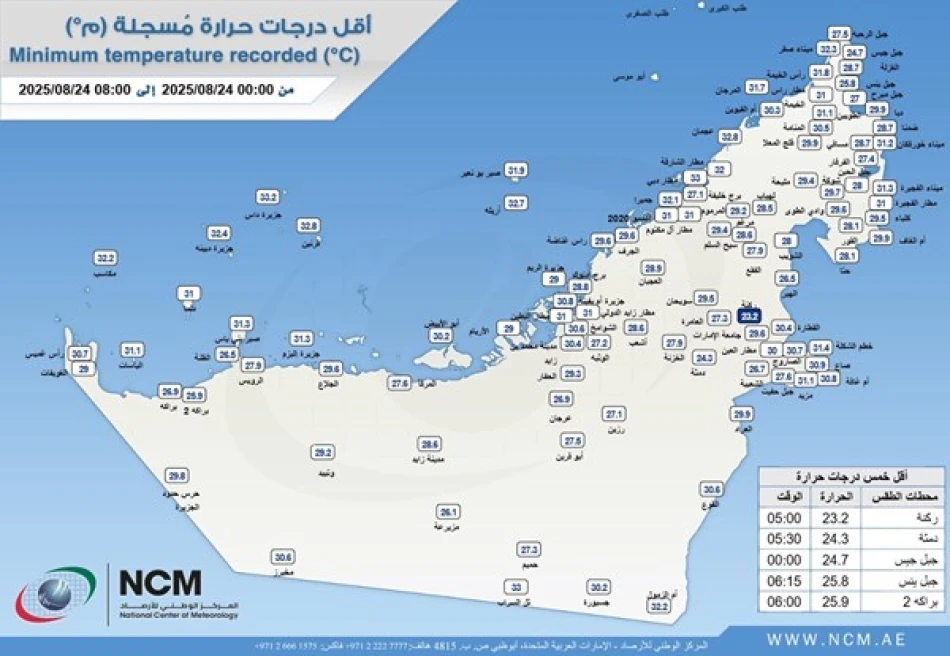
Al Ain Experiences Record Low Temperatures in the UAE
UAE Records Surprisingly Mild Winter Low of 23.3°C as Climate Patterns Shift
The United Arab Emirates experienced its coolest temperature of the day at a relatively warm 23.3°C (74°F) in Al Ain's Rakna area, highlighting the country's consistently hot climate even during winter months. The temperature reading, recorded at 5:00 AM local time on Sunday, underscores the Gulf nation's year-round warmth that has made it both a winter destination and a significant energy consumer.
Desert Climate Realities in a Warming World
The 23.3°C minimum temperature reflects the UAE's desert climate characteristics, where even winter lows rarely drop below comfortable levels for most global standards. Al Ain, located in the eastern region near the Omani border, typically experiences the country's more moderate temperatures due to its inland location and higher elevation compared to coastal cities like Dubai and Abu Dhabi.
This temperature reading comes during what is traditionally the UAE's coolest season, running from December through February. Historical data shows the country's winter minimums have generally ranged between 15-25°C in recent decades, making Sunday's reading fairly typical for the region.
Energy and Economic Implications
The persistently warm temperatures carry significant implications for the UAE's energy consumption patterns and economic planning. With cooling costs representing a major portion of electricity demand year-round, such temperature readings reinforce the country's heavy reliance on air conditioning and its substantial energy infrastructure investments.
Regional Climate Context
Compared to neighboring Gulf states, the UAE's winter temperatures align closely with regional patterns. Saudi Arabia's northern regions can experience much colder winters, sometimes dropping below 10°C, while Qatar and Bahrain maintain similar temperature ranges to the UAE. This consistency across the southern Gulf states influences everything from tourism planning to agricultural strategies.
Tourism and Lifestyle Impact
The mild winter temperatures continue to support the UAE's position as a premier winter destination for European and North American visitors seeking warm weather escapes. Hotel occupancy rates and outdoor event scheduling heavily depend on these predictable temperature patterns, with the 23.3°C minimum representing ideal conditions for outdoor activities and tourism infrastructure.
For residents, such temperatures mean continued reliance on climate control systems even during the supposed "cool" season, influencing everything from clothing retail patterns to utility bill calculations. The reading serves as a reminder of the Gulf region's unique climate challenges and the adaptation strategies required for sustainable living in one of the world's hottest regions.
Most Viewed News

 Layla Al Mansoori
Layla Al Mansoori






